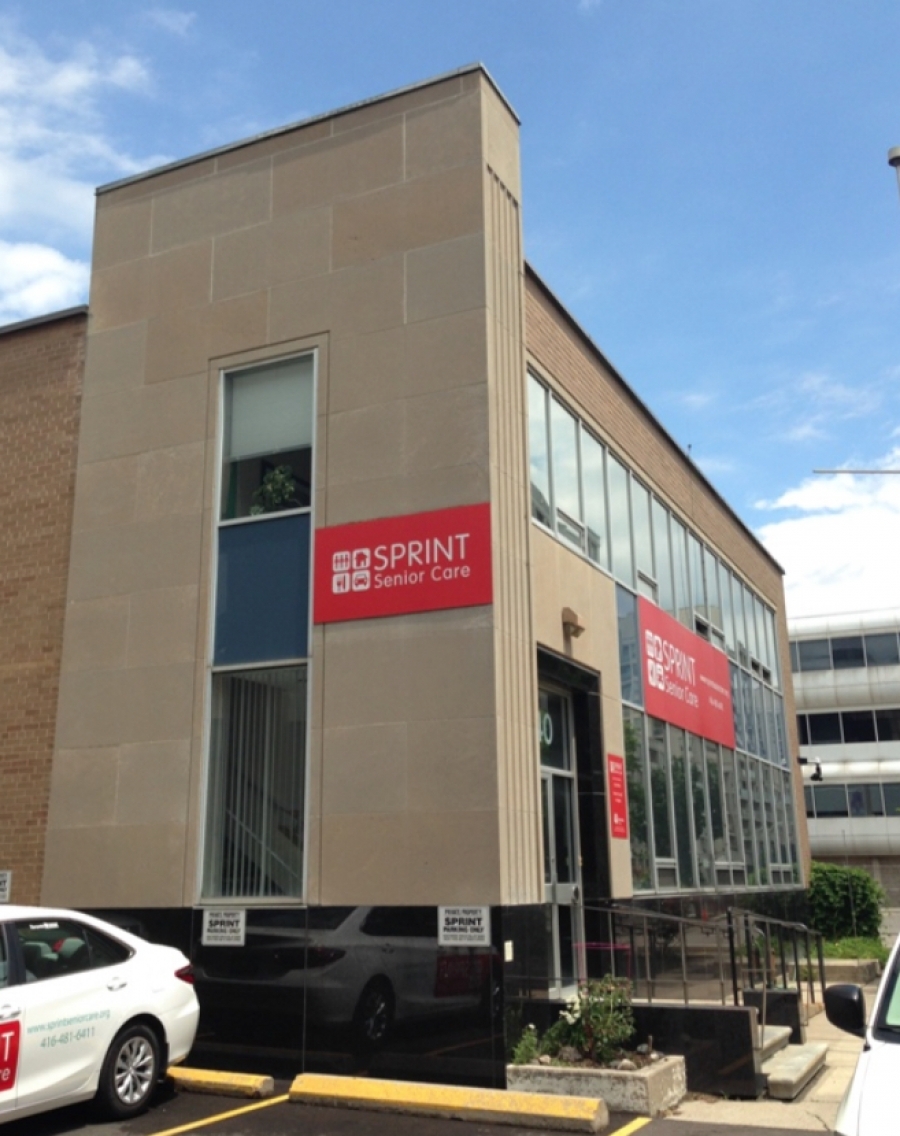Notes:
The War Amputations of Canada building was constructed in 1959-1960 as their new headquarters and key manufacturing services facility to the designs of the architect, Charles Dolphin. In 1973, the building was extended at the rear with a single-storey storage facility. At this time parking was removed from the front of the building and a landscaped garden was created in its place. Further extensions were undertaken in 1985. In 1995 a ramp was added providing access to the main entrance.
In 1994 the War Amputations of Canada sold the property to the City of Toronto. It was subsequently occupied by SPRINT Senior Care as well as the City's Transportation Services (until 2014).
Statement of Cultural Heritage Value:
The former War Amps building has design value as a rare example of a headquarters-manufacturing building designed to integrate a cenotaph-like element in the Modern Classicism style. Favoured by public institutions and conservative corporations, Modern Classicism was applied to this building designed for the employment of Canadian war amputees manufacturing their key tags and for their national headquarters. The design value is evident in the high degree of artistic merit seen in the combination of minimal and linear classical details, traditional materials such as limestone cladding, modern materials and elements such as polished black granite, curtain walling and the cast metal handrails which exhibit the combined influence of Streamlined Art Deco and 1950s automobile styling. Further, the tall, single, limestone-clad fluted pier at the west end of the principal (south) elevation of the building has a quality evocative of a cenotaph, appropriate in honouring the sacrifice made by the war amputees in service to their country. The building with its highly visible cenotaph-like stone pier, originally displaying the War Amps emblem, is set back and viewed across the open space in front of the building and on approach from Yonge Street.
The property has associative value with the War Amps organization, founded in 1918 by veteran amputee and army padre Lieutenant Colonel Sidney Lambert, O. B. E. (1886-1971), who remained the president of War Amps until his death and was a persistent advocate for veterans. To honour him, the former Christie Street Military hospital was re-named Lambert Lodge. The War Amps received its charter in 1920 as an organization of "amputees helping amputees" with both practical assistance and counselling. Their now nation-wide, key tag service was initiated in 1946 as a means for veterans to achieve independence through employment. The War Amps has expanded their services to include adults and children who have lost their limbs from causes other than war. The property is also valued for its association with the Toronto architect Charles B. Dolphin (1888-1969), known for many fine landmark buildings in the city including the Postal Delivery Building (1939-1941).
Contextually, the War Amps building is valued as it contributes to maintaining the mid-century character and low-rise scale of the buildings fronting onto the north side of Merton Street between Yonge Street and Pailton Crescent. The building is historically linked to its surroundings as it was part of post-war transformation and re-development of the street following the completion of the Yonge Street subway line.
See the attached source for more information about the building, the War Amputations of Canada and the history of Davisville including photographs, maps, and drawings.
-Marybeth McTeague



